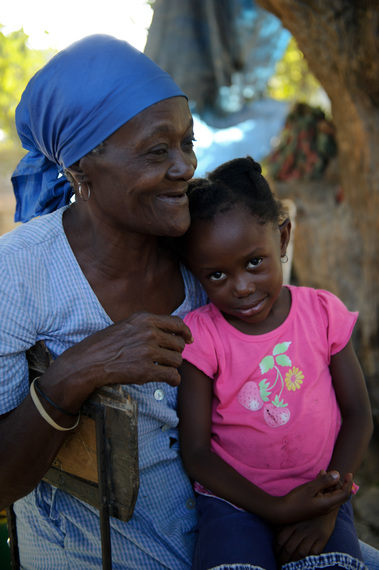
Both my grandmothers lived to be 90 years of age. This might not be extraordinary in Italy, the European country with the biggest proportion of people over 80 years of age. But it was certainly unthinkable in many other countries. This is quickly changing. Today, for the first time in history, most people can expect to live into their sixties and beyond. Many, some 125 million in fact, are aged 80 or more. And the majority of those older people are women.
This should all be a cause for celebration. As Betty Friedan said: Aging is not lost youth but a new stage of opportunity and strength. And it is, so long as these people are living in good health and in an environment that enables them to do the things they value and play an active role in society.
Unfortunately, this is often not the case.
As people age, they are more likely to suffer from a number of different health conditions at the same time. Most of these are likely to be chronic, such as heart and respiratory conditions.
Some conditions affect women more than men. As women age, they often experience changes in joint and bone structure and density, which increase their risk of osteoporosis. As well having an increased risk of becoming frail, they may be more prone to falls and fractures.
Health care must focus on keeping us active
As I look ahead to my own old age, I am increasingly conscious of the need for many countries to make some radical changes in the way health services are organized.
First, they need to provide care that focuses on keeping people active and independent for as long as possible. This means setting up teams of generalist practitioners who are trained in geriatrics along with doctors and nurses, physiotherapists, psychologists, physical educators, and nutritionists.
Some countries are already doing this. In Brazil, health professionals have learnt how to assess older people's ability to continue going about their everyday activities. Once this has been established, they can draw up customized and integrated support plans that draw on a variety of services and providers.
Long-term care systems for older people
Second, all countries will need long-term care systems that cater to the needs of older people. Today, most long-term caregivers are women. Most of them are unpaid and almost all untrained. They might be providing support as family members, as volunteers, or even as paid but untrained employees.
There is a lot wrong with this approach. Not least the fact that as more women are realizing their right to enter the paid workforce, it is clearly unsustainable. All countries will therefore need to invest in formal structures within which caregivers are appropriately trained and remunerated.
Age-friendly environments are key
Older people don't just need looking after. They need to be able to live in an environment that is adapted to their needs. This means having a safe home, with fewer stairs, wider passages and handrails; with easy access to public transport accessible, so that people can get out and about and stay in contact with family and friends...
Some communities have been experimenting with age-friendly initiatives. In Sangam Vihar in south Delhi, when a survey revealed that older people were concerned about safety, a program was set up to facilitate their contact with community police officers.
In the United States of America, through the volunteer program Experience Corps, older volunteers help children in public elementary schools learn to read, keeping them an engaged and productive part of their community. This is the type of initiative that has benefits for all generations.
Financial security for older women
Financial security is also key. This is often a particular issue for women. In many countries, today's older women are still less likely than men to have gained pension rights during their working life, because they have cared for family members throughout their life or worked as unpaid agricultural laborers.
One way of addressing this inequity is for the state to provide social pensions - or cash transfers to older people who have not previously contributed to a national payment scheme. Financial security raises social status, and enables the recipients to play a role in household decision-making, and have better access to health services. In low-income countries particularly, it ensures that the whole family eats nutritious meals and that children go to school.
Another approach is to engage older workers in the workforce. Employers need to recognize the value that the experience and knowledge of older workers can bring to their organizations, and opportunities for retraining need to be offered such that older workers can stay in the workforce for longer.
Global Strategy and Action Plan on Ageing and Health
At the end of October, the World Health Organization is bringing together experts from all over the world to discuss steps like this, and to develop a new Global Strategy and Action Plan on Ageing and Health.
A baby girl born today could well live beyond the end of this century. But if she is to enter the 22nd century happy, healthy, and financially secure, we need to start making some big changes to the way the world treats and cares for older people - now.
Related links
Please find facts on aging, details about the Consultation on Global Strategy and Action Plan on Ageing and Health, and other discussion about aging and other life-course issues on our website.
